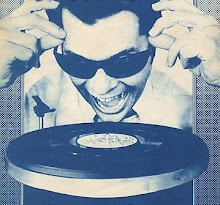 JFK had been assassinated, civil rights were anything but, the U.S. had sent “advisors” to Vietnam and we periodically practiced climbing under our desks should Khrushchev decide to vaporize Southeastern Michigan. Yes, there was plenty of fodder for protest songs in the early '60s.
JFK had been assassinated, civil rights were anything but, the U.S. had sent “advisors” to Vietnam and we periodically practiced climbing under our desks should Khrushchev decide to vaporize Southeastern Michigan. Yes, there was plenty of fodder for protest songs in the early '60s. I missed the Bob Dylan folksinger hoopla by about seven years, however. There was a fair amount of Kingston Trio and Peter, Paul and Mary being played at home, but no Woody Guthrie, Pete Seeger or... Bob Dylan. And once I heard Bobby Darin, Ray Charles, Dave Brubeck and the Beatles, I never felt compelled to investigate folk music. To my ear, even the most poignant lyrics have always been incidental to the instrumental accompaniment.
It don’t mean a thing if it ain’t got that swing.
My introduction to Dylan has been circuitous. It started in the late '60s with debut albums by two then-new groups: Blood, Sweat & Tears (with founder Al Kooper on keyboards and vocals) and the breakout group, Electric Flag (led by guitar phenom Mike Bloomfield). A couple of years before, both musicians found themselves playing on Dylan’s Highway 61 Revisited, featuring such tracks as Like a Rolling Stone and Just Like Tom Thumb’s Blues. Their appearance on a Dylan album, then backing him up onstage, led to a public uproar.
Free! Listen to Like a Rolling Stone
in its entirety. Download it here (99¢).
But then the REAL show starts. It’s 1965 and Dylan has “gone electric,” daring to show up at Newport with the Highway 61 Revisited musicians. While the crowd is busy booing, the viewer is treated to but a glimpse of the genius of Mike Bloomfield, as well as that of Dylan’s for including the guitarist in the controversial lineup.
For footage of Bloomfield leading Electric Flag, see The Complete Monterey Pop Festival, also featuring a performance of Kooper’s earlier group, The Blues Project. And we also recommend Martin Scorsese’s DVD biography of Dylan, No Direction Home, available in at Amazon in Video On Demand format.



